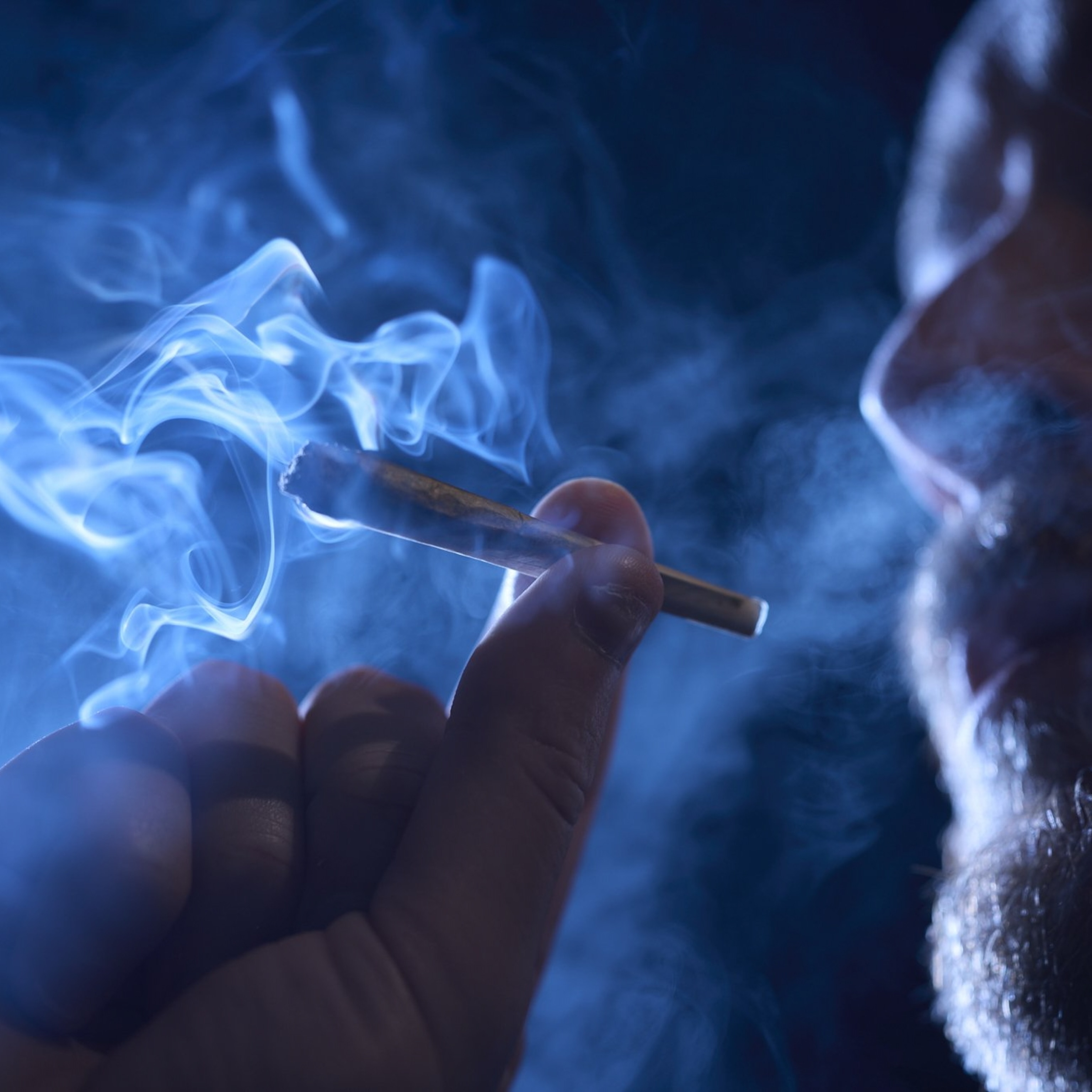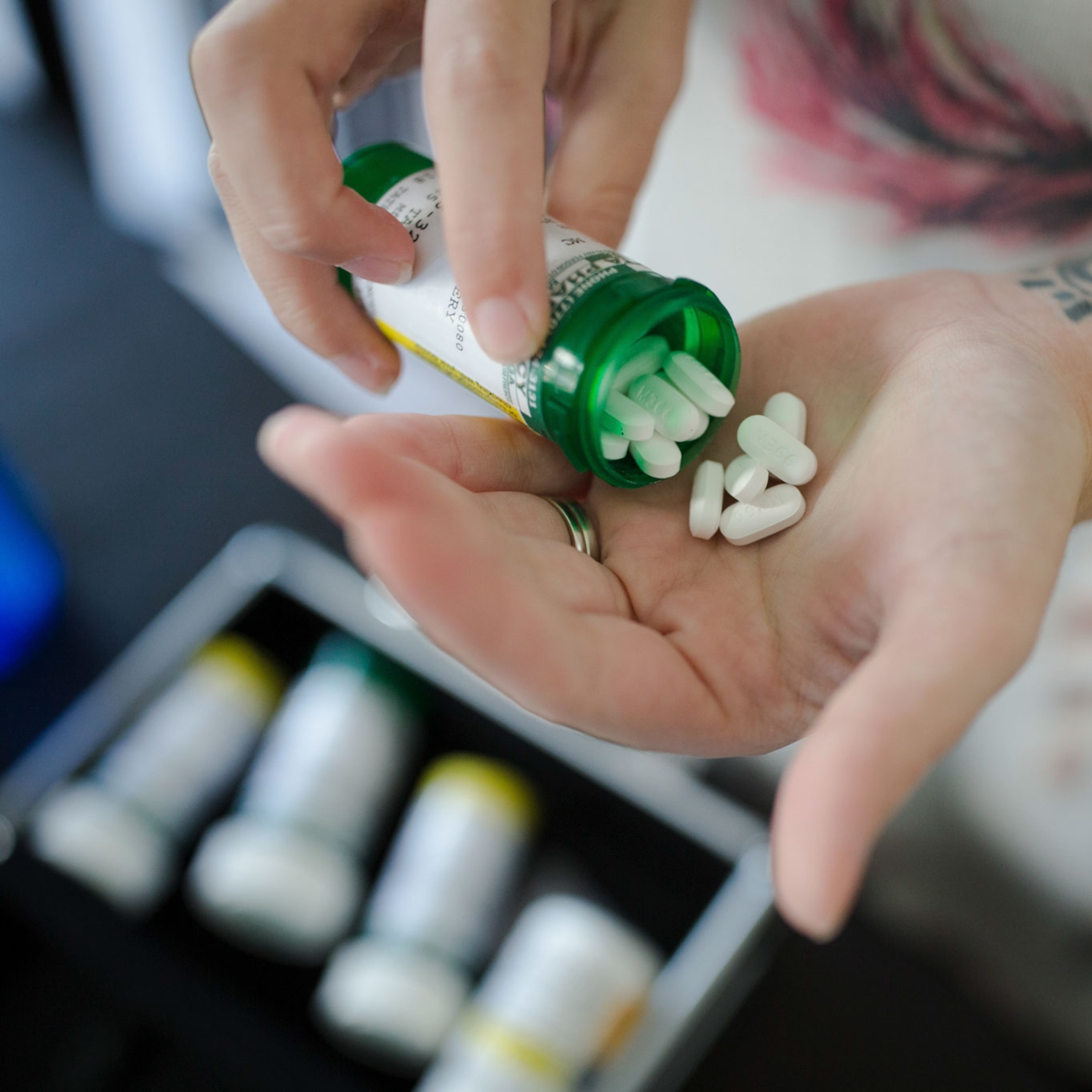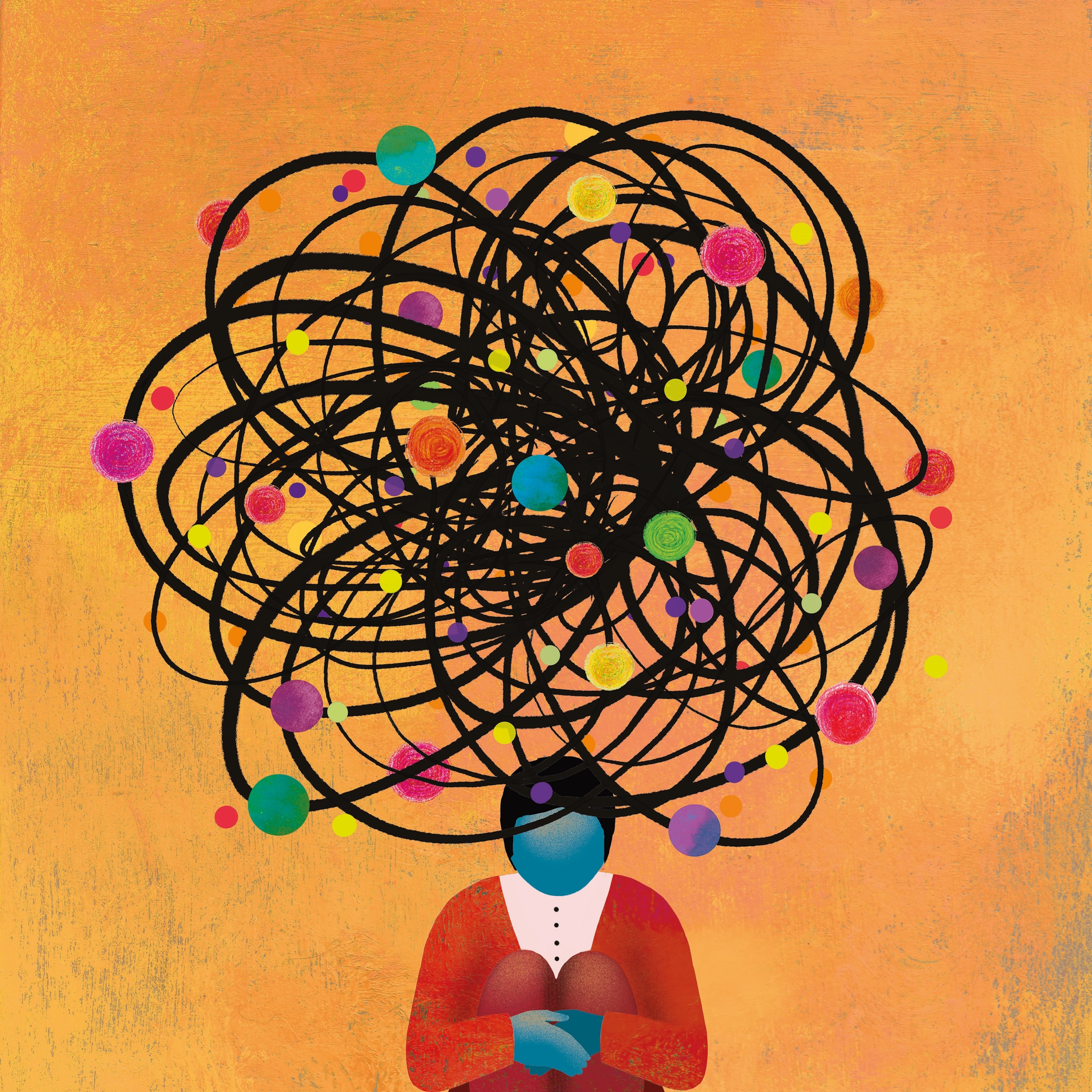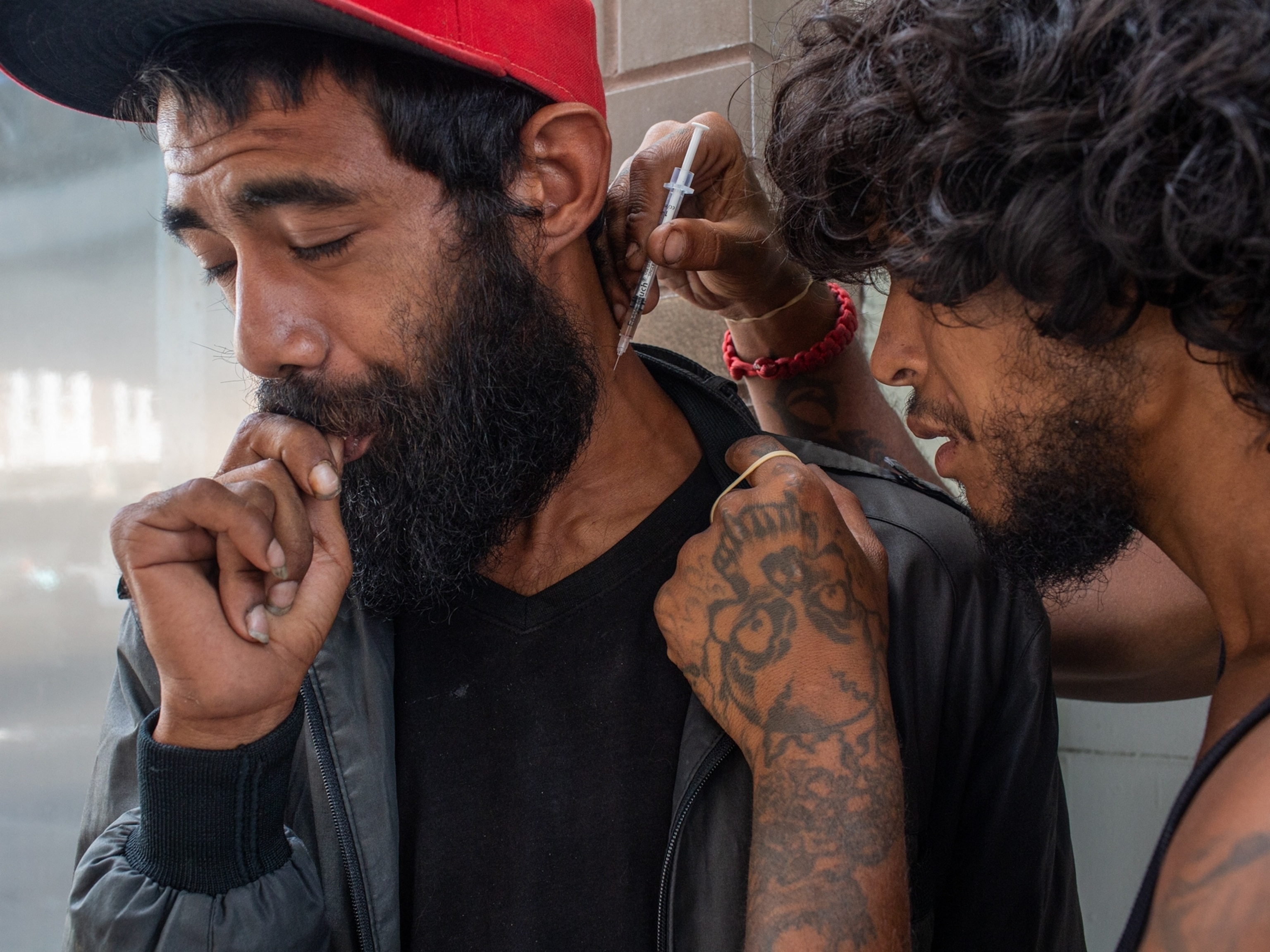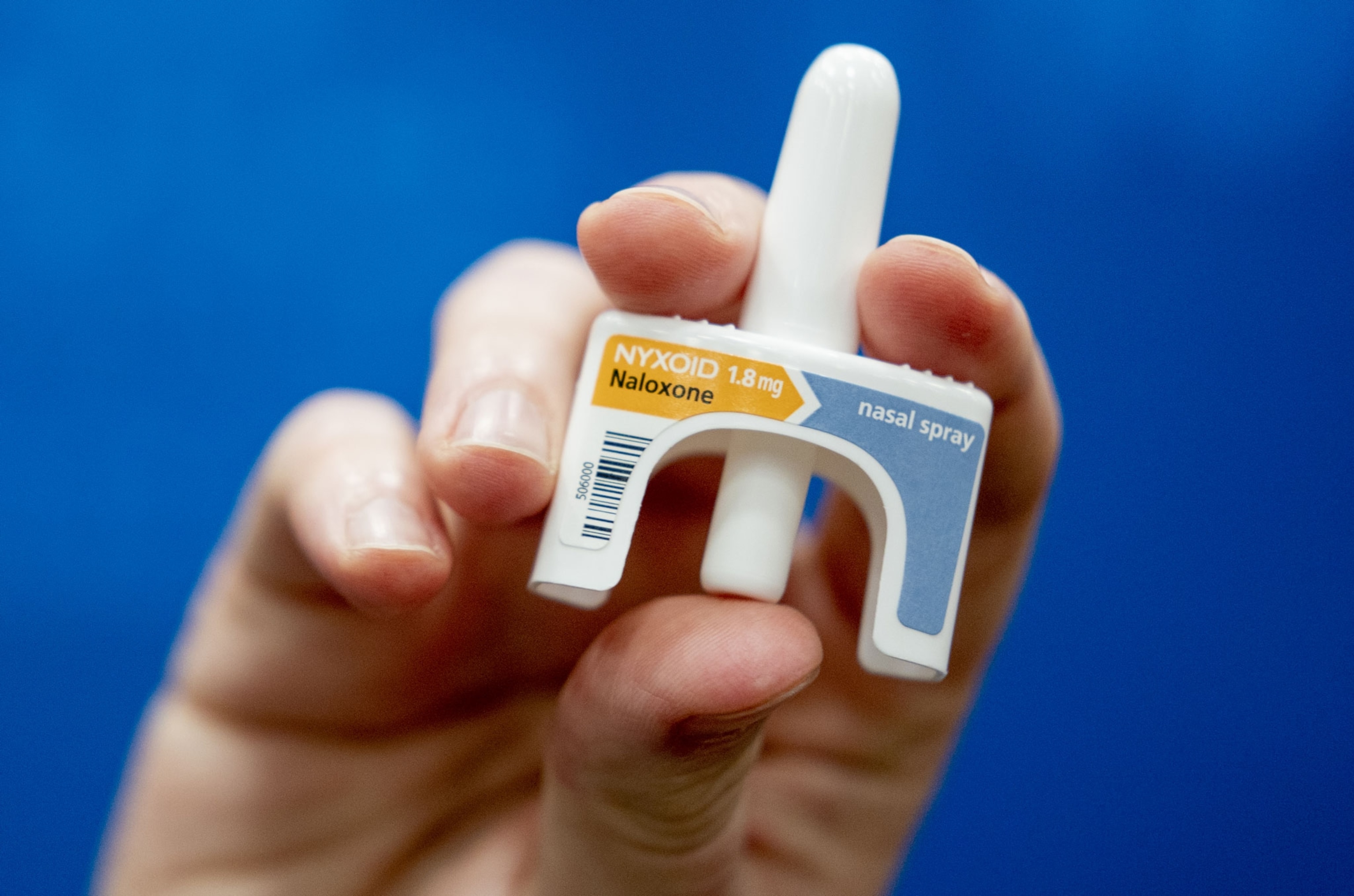
How fentanyl kills—and how Narcan saves lives
The steady increase in opioid overdose deaths across the U.S.—which more than doubled among teens in just two years—has heightened debate over the role of naloxone in the front lines of American addiction.
The steady increase in opioid overdose deaths has heightened national conversations about access to naloxone, also known as Narcan, an opioid antagonist that reverses the effects of fentanyl and other opioids.
In California, for example, lawmakers have introduced bipartisan legislation to increase naloxone access. One bill would require public schools to keep at least two doses of naloxone on hand in case of an overdose, and another would require managers of bars, gas stations, public libraries, and hotels in counties with high overdose rates to post a naloxone kit with instructions in an area accessible to employees. Addiction medicine experts say these bills are steps in the right direction.
(Human Bodies Make Their Own Morphine)
“There’s no downside to getting naloxone in schools if people can access and use it in an easy, low-barrier, shame-free way,” Kimberly Sue, an assistant professor of medicine at the Yale School of Medicine, says. “It’s a magical medication that literally has a Lazarus effect that can reverse the opioid effect on people’s brains and give people time to get emergency care. There’s no way people can misuse it or abuse it.”
Any potential opposition to the bills is likely to arise from misconceptions about naloxone or lack of awareness about fentanyl, the drug driving the current opioid overdose epidemic, says Ryan Marino, an addiction medicine specialist and emergency physician at Case Western Reserve University School of Medicine. Drug overdose deaths exceeded 100,000 for the first time in 2020 and continued rising even higher in 2021, with synthetic opioids like fentanyl responsible for more than 80 percent of opioid-related overdoses
Fentanyl is also the leading substance involved in overdose deaths among teens, says Scott Hadland, chief of adolescent medicine at Mass General for Children. Overdose deaths in teens more than doubled from 2019 to 2021, with fentanyl accounting for three-quarters of those deaths.
Here’s what you need to know about fentanyl to understand the naloxone debate.
What is fentanyl?
Fentanyl is a synthetic opioid about 50 to 100 times more potent than morphine and about 50 times more potent than heroin, Hadland says.
The prescription form of fentanyl used to treat severe pain has an “incredible safety record,” Marino says, but its potency means even small amounts translate to huge differences in dose. Further, street drugs containing fentanyl—whether it’s supposed to be there or not—aren’t tested for purity. The problem stems from illegally manufactured fentanyl, which flows into the U.S. from China, Mexico, and India, but is also easily made in the U.S. with readily accessible chemicals. Forms include eye drops, nasal spray, powder, or pills made to look like prescription opioids—like oxycodone.
“When it comes to the unregulated supply on the black market, there aren’t any purification standards, so very small mistakes mean big differences in effects,” Marino says.
Why are so many people dying from fentanyl?
The explosion in overdoses in recent years arises primarily from changes in the unregulated opioid supply, which has shifted from prescription pills and heroin to fentanyl, Sue says. There are several reasons for that. First, the growing destruction of the world’s illegal opium supply, in Mexico and, more recently, in Afghanistan, has sharply reduced heroin supply. With less heroin available, demand for fentanyl—a cheap, potent replacement for other opioids—has risen.
Then, “there’s an enormous market of counterfeit pills,” Hadland says. A crackdown on opioid prescribing made it harder to get real prescription pills just as fentanyl became easy to produce and import into the U.S. Often when teens think they’re buying oxycodone, Xanax or even Adderall, they’re buying a fake pill made with fentanyl. Young people are less likely to have built up a tolerance through prior opioid use, so they’re particularly at-risk for overdosing.
The final issue is contamination when dealers prepare or manufacture drugs on the same surfaces used for fentanyl. Tiny amounts of fentanyl contamination can lead to an overdose, especially in people intending to use cocaine, MDMA or methamphetamine who haven’t built up a tolerance.
How do you treat a fentanyl addiction or overdose?
Fentanyl slows or stops a person’s breathing, so the only treatment is oxygen or reversing the drug’s effects with naloxone, which works by binding to and blocking the opioid receptors and restoring breathing.
“Really, the alternative to [naloxone] outside of a medical setting if someone’s having an overdose is death,” says Marino, who would like to see naloxone available in public places like first aid kits and defibrillators are.
Key to reducing opioid overdose deaths, then, is ensuring wide accessibility to naloxone, particularly for those who use drugs and their friends and family. If students have to ask the school nurse for naloxone, it’s less useful than if it were available for free in vending machines, as Michigan and North Carolina are doing, Sue says.
“When teenagers are using substances, they are the first responders, they are the ones who are going to keep their friends safe,” Sue says. “All opioid overdoses are preventable … if it’s getting into the hands of the right people.”
That’s why putting naloxone in schools makes a lot of sense, Hadland says. “I think of naloxone as being similar to a fire extinguisher,” he says. “You always want to have one on hand, and you hope never to have to use it, but if there’s an emergency, you’re glad it’s there.”
What barriers exist to addressing the opioid overdose epidemic?
There are multitudes. For one, naloxone carries a stigma from negative beliefs grounded in “moralization and myth” rather than facts, says Marino. He created a fact sheet correcting common misconceptions, such as the idea that naloxone’s presence enables people to use drugs or use higher doses or more potent drugs, which multiple studies have definitively disproven.
Another barrier is that youth may not realize just how dangerous today’s drug supply is, a knowledge gap exacerbated by a history of fear-based approaches to drug education, Hadland says. Past hyperbolic claims about cannabis harms, for example, may have desensitized young people to “believe us when it really matters,” he says. “Now when we’re trying to tell them that fentanyl can kill you, we really mean it.”
Then there’s the other epidemic among youth: mental health issues.
“The context here is that many young people are struggling with unaddressed mental health concerns or are working through pain that’s gone unaddressed,” Hadland says. Despite the oversimplified narrative that teens always experiment, youth experimentation with substances has steadily declined even as overdose rates have risen. “That speaks to the potency of the drug supply and its dangers right now,” he says.
Finally, structural barriers include blocking people’s access to harm reduction approaches, including naloxone and the medication-based treatments methadone and buprenorphine, as well as not addressing the reasons people use drugs, such as homelessness and untreated mental health conditions, Sue says.
Is there any good news?
The good news is that people are innovating around the country to increase naloxone access, plus the FDA recently encouraged development of over-the-counter naloxone products, Sue says.
A grassroots movement in recent years among those using drugs has pushed for harm reduction approaches and greater availability of naloxone, methadone, and buprenorphine, Marino adds. He said the most promising initiatives he’s seeing are coming from the very people worst hit by the drug crisis, "so that’s really what inspires me,” he says.
Hadland also highlighted a shift in the national conversation to focusing on the safety of young people first. “If we can’t keep them safe and alive, then we can’t help address these other issues,” he says. “It’s easy to blame the drug and forget about the person who needs support, but the safety-first narrative puts the young person at the heart of the discussion.”

